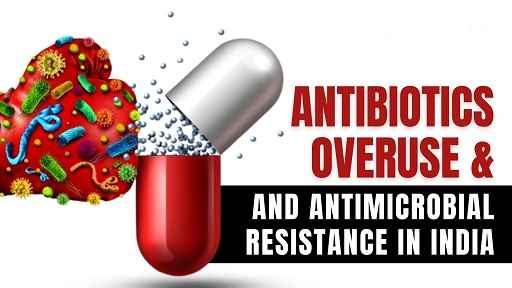 New Delhi: 20 crore people in India are in vice like grip of high blood pressure. Half of them are not aware that they are sitting on the minefield of high blood pressure. There is no other disease which accounts for such vast population.
New Delhi: 20 crore people in India are in vice like grip of high blood pressure. Half of them are not aware that they are sitting on the minefield of high blood pressure. There is no other disease which accounts for such vast population.
Given the grim scenario, Indian Council of Medical Research (ICMR) has scaled up its India Hypertension Control Initiative (IHCI) to 100 districts encompassing every state. It was announced today ( 31 July, 2019) in ICMR. In a press briefing Dr Prabhdeep Kaur, Deputy Director and Head of Division of NCD at ICMR-National institute of Epidemiology, Chennai, said out of 20 crores, blood pressure of only 2 crore people are controlled. We have set a target of 25 % reduction in number till 2015.
Indian Council of Medical Research (ICMR), in collaboration with World Health Organization and Ministry of Health and Family Welfare, today announced nationwide expansion of their program India Hypertension Control Initiative (IHCI). Launched in November 2017 IHCI has enrolled more than three lakh patients with high blood pressure in the government health facilities in 25 selected districts of the country in the states of Punjab, Madhya Pradesh, Kerala, Telangana, and Maharashtra.
Now IHCI will expand to 100 districts across India covering all the states. The project will accelerate the implementation of quality hypertension treatment for over 15 crore population over the next four years and prevent deaths from heart attack, stroke and kidney failure.
 Heart attack and stroke are the leading cause of death globally, including India. Uncontrolled high blood pressure or hypertension is the most common reason for sudden heart attack or stroke. In India, one in four adults have high blood pressure. Among people with high blood pressure, only half have been diagnosed and only 1 in 10 have blood pressure under control. As a result, a large number of people develop heart attacks, strokes, and kidney failure while in the productive years of life.
Heart attack and stroke are the leading cause of death globally, including India. Uncontrolled high blood pressure or hypertension is the most common reason for sudden heart attack or stroke. In India, one in four adults have high blood pressure. Among people with high blood pressure, only half have been diagnosed and only 1 in 10 have blood pressure under control. As a result, a large number of people develop heart attacks, strokes, and kidney failure while in the productive years of life.
IHCI complements the National Programme for Prevention and Control of Diabetes, Cardiovascular Disease and Stroke (NPCDCS) of Ministry of Health and Family Welfare, Government of India. IHCI will continue to accelerate the achievement of targets of Government of India by ensuring a continuum of care and give a boost to the ongoing “Ayushman Bharat” program.
 Launching the expansion of IHCI, Dr. Balram Bhargava, Secretary, Department of Health Research and Director General ICMR said, “The Government of India has adopted a national action plan for the prevention and control of non-communicable diseases and has set a target for a 25% reduction in high blood pressure by 2025. With approximately 20 crore adult patients with hypertension in India, more support from all quarters will be needed to help the Government achieve this target. IHCI is a model initiative towards that. Prevention and treatment of hypertension is far safer for patients than expensive interventions like bypass surgery and dialysis.”
Launching the expansion of IHCI, Dr. Balram Bhargava, Secretary, Department of Health Research and Director General ICMR said, “The Government of India has adopted a national action plan for the prevention and control of non-communicable diseases and has set a target for a 25% reduction in high blood pressure by 2025. With approximately 20 crore adult patients with hypertension in India, more support from all quarters will be needed to help the Government achieve this target. IHCI is a model initiative towards that. Prevention and treatment of hypertension is far safer for patients than expensive interventions like bypass surgery and dialysis.”
Dr. Henk Bekedam, WHO Representative to India, said, “Hypertension is a silent killer. Treatment of hypertension is simple, effective, easily available and needs to be continued lifelong The World Health Organization has prioritized Universal Health Coverage, and the India Hypertension Control Initiative serves as an excellent example of a free program that improves the health of the Indian people,”
The project is supported by ‘Resolve to save lives’ – an initiative of Vital Strategies who is the international technical partner to the program.
IHCI contributes to health system strengthening through:
- Hypertension treatment protocols to simplify quality patient care in the primary care facilities
- Prioritizing adequate quantity of quality medicine and blood pressure monitors
- Comprehensive training for healthcare workers (doctors, nurses, pharmacists, ANM, mid-level health care providers) on latest practices on hypertension.
- Focusing on team-based care to involve nurses, health workers and ASHAs for counseling and follow up of the patients and to improve adherence to treatment.
- Patient-centered services to improve patient support, reduce reliance on bigger hospitals far away from the patient’s home, increase the utilization of “Health and wellness centers” and primary health centers and reduce the travel and expenditure on medicines.
- Easy-to-use information systems strengthen the culture of accountability and continuous improvement which can be applied to other health conditions as well.
Monitoring of all the health facilities and prompt feedback to the program managers to bridge the gaps in a timely manner.









